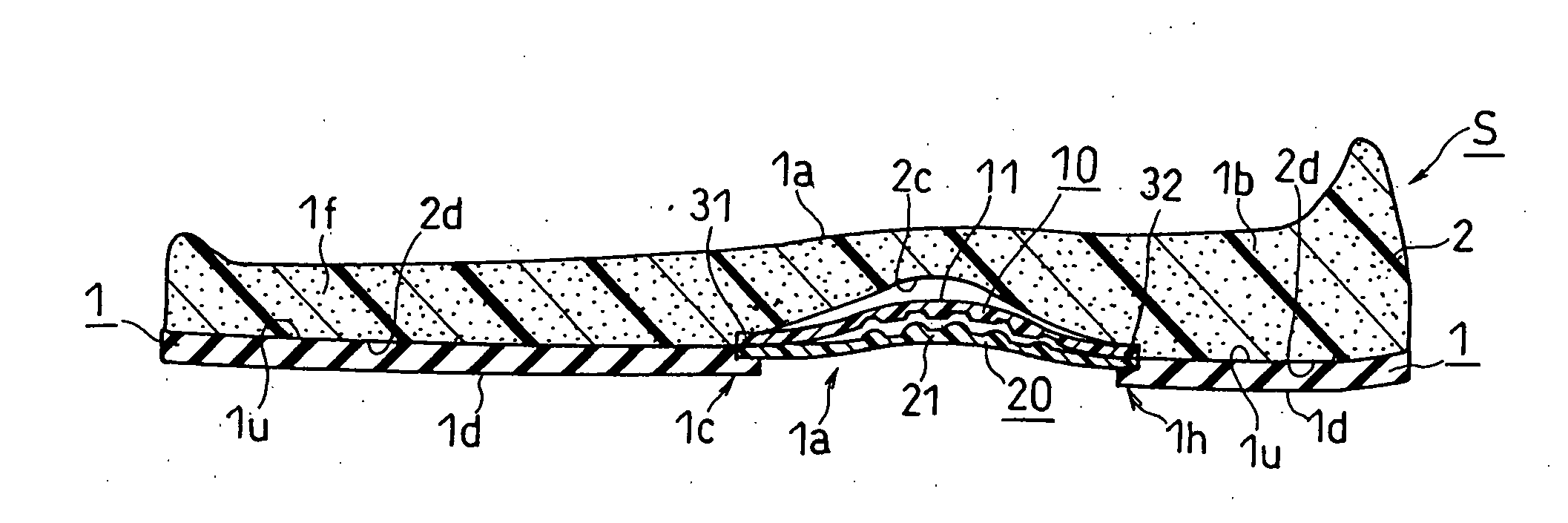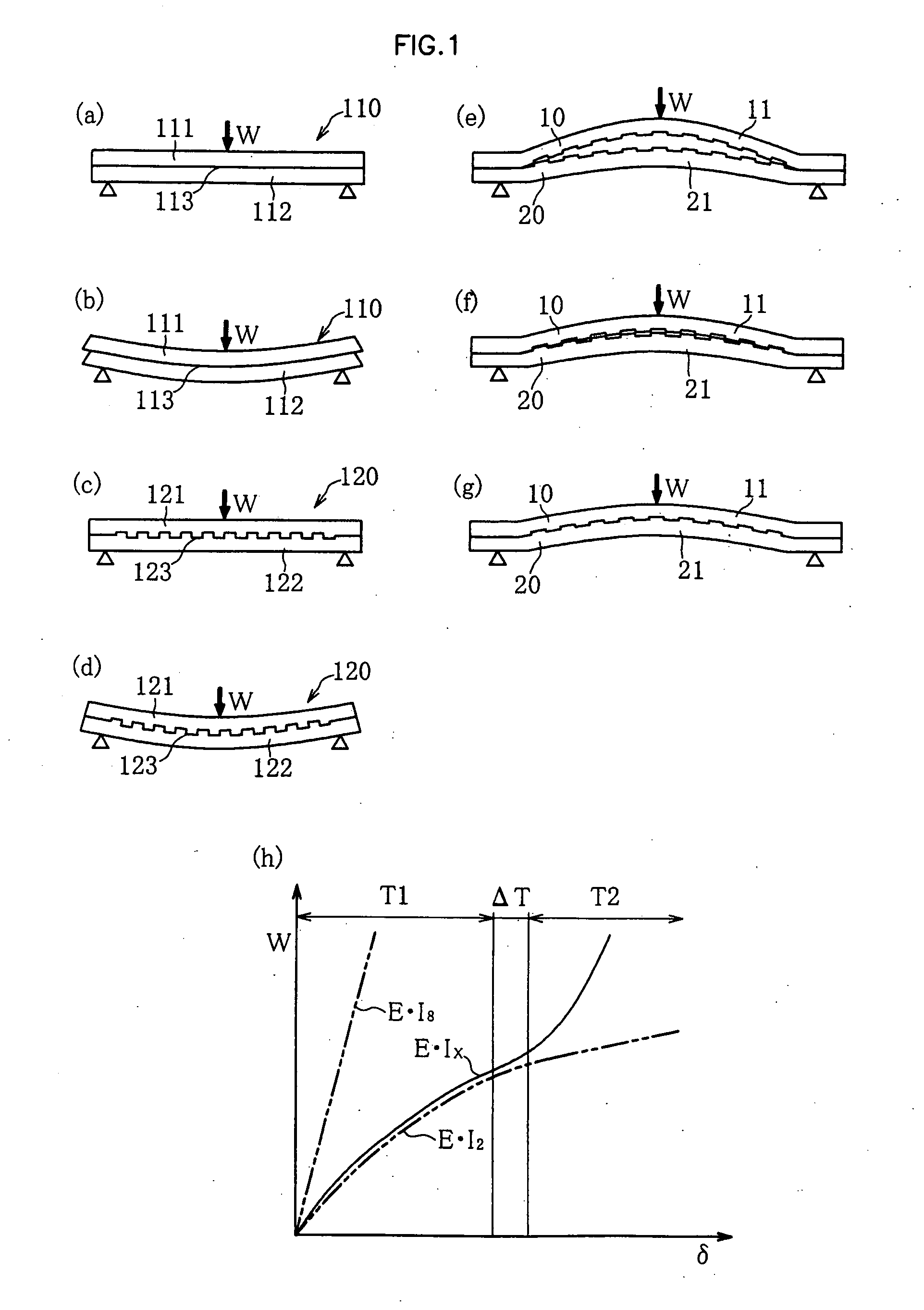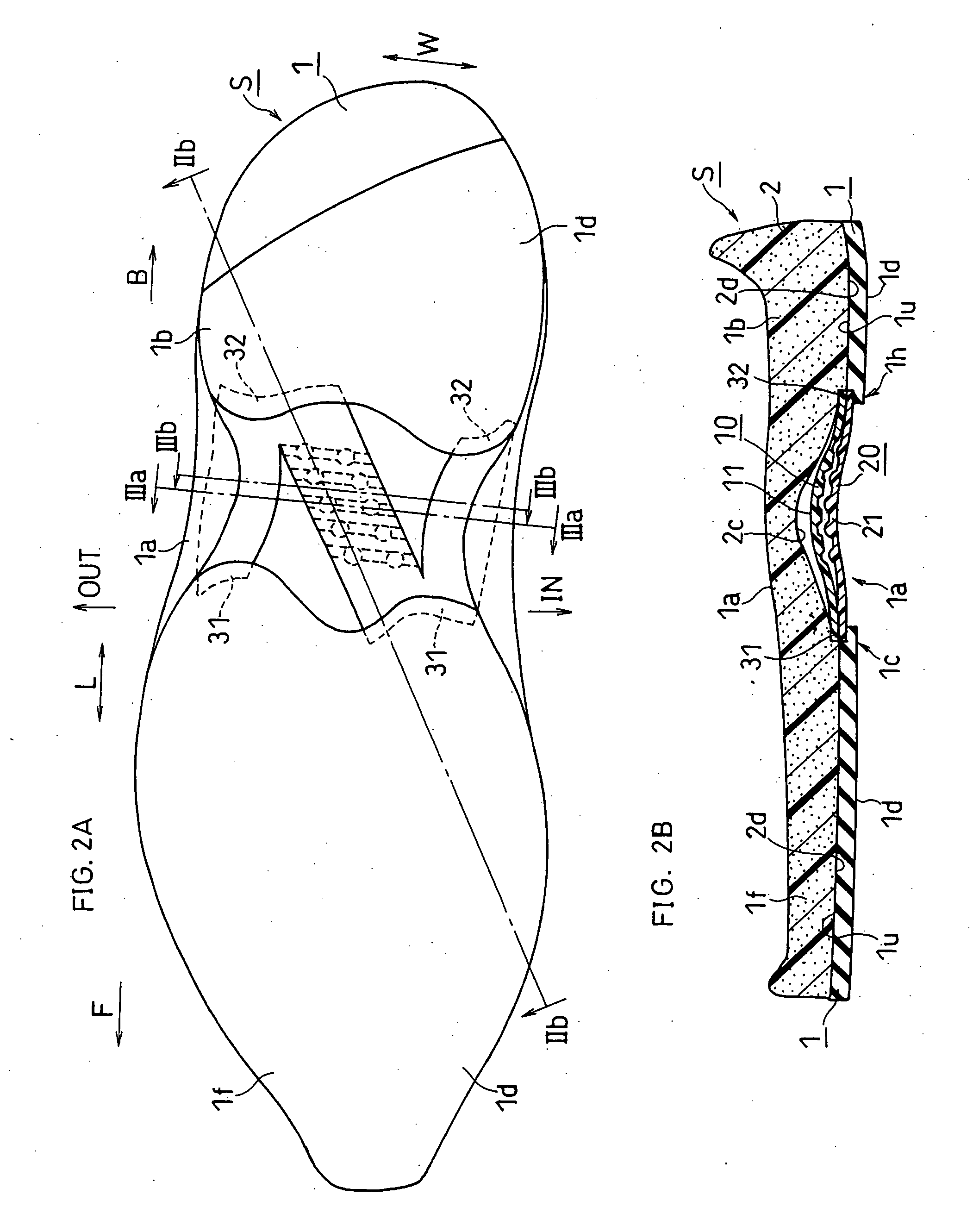Shoe Sole with Reinforcement Structure
a technology of reinforcement structure and shoe sole, which is applied in the field of shoe sole with a reinforcement structure, can solve the problems of inhibiting the free movement of the foot, reducing the flexural rigidity, and significantly increasing the flexural rigidity. eix, small flexural rigidity, and increasing the flexural rigidity
- Summary
- Abstract
- Description
- Claims
- Application Information
AI Technical Summary
Benefits of technology
Problems solved by technology
Method used
Image
Examples
first embodiment
[0097]A first embodiment of the present invention will now be described with reference to FIGS. 2A to 6C. In this and subsequent figures, the arrow F denotes the front direction of the shoe, and the arrow B denotes the rear direction of the shoe.
[0098]General Structure of Shoe Sole:
[0099]FIGS. 2A and 2B show a shoe sole S being in a non-worn state where the shoe is not put on a foot.
[0100]As shown in FIGS. 2A and 2B, the shoe sole S includes an outer sole 1, a mid sole (the shock absorbing layer) 2, and first and second reinforcement members (an example of the first and second members) 10 and 20 for reinforcing a middle foot portion 1a of the mid sole 2.
[0101]As shown in FIG. 2A, the outer sole 1 is divided into a front foot portion 1f and a rear foot portion 1b, and the portions 1f and 1b are spaced apart from each other at the position of a middle foot portion 1a directly under the arch of the foot. The portions 1f and 1b of the outer sole 1 each have a ground contact surface 1d t...
second embodiment
[0137]A second embodiment of the present invention will now be described with reference to FIGS. 8A to 10C.
[0138]As shown in FIG. 8B, the shoe sole of the present embodiment includes a shock absorbing layer (an example of the first member) 10A formed by using a foamed resin for absorbing the impact upon landing, i.e., the mid sole 2, the reinforcement member (an example of the second member) 20, and the outer sole 1. The first deformable portion 11 of the shock absorbing layer 10A includes the first engagement elements 12 being grooves extending in the transverse direction W, and the second deformable portion 21 of the reinforcement member 20 includes the second engagement elements 22 being hemispherical protrusions.
[0139]As shown in FIGS. 9A and 9B, the first lower surface 10d of the shock absorbing member 10A faces the second upper surface 20u of the reinforcement member 20. As shown in FIG. 9A, a portion of the second medial portion 23 of the reinforcement member 20 and a portion...
third embodiment
[0149]A third embodiment of the present invention will now be described with reference to FIGS. 12A to 12C.
[0150]As shown in FIG. 12A, a first member 10B includes a shock absorbing layer 2A formed by using a foamed resin, and a film or plate 15 of a non-foamed resin secured to the lower surface of the shock absorbing layer 2A. The second member 20 is formed by a second plate having a greater thickness than that of the film or plate 15.
[0151]Otherwise, the structure is similar to that of the second embodiment described above, and like elements are denoted by like reference numerals and will not be further described or shown in the drawings.
[0152]Non-Worn State:
[0153]In the non-worn state shown in FIG. 12A, a first lower surface 15d of the film 15 of the first member 10B is spaced apart from the second upper surface 20u of the second deformable portion 21 of the second member 20 in the vertical direction.
[0154]Under First Load:
[0155]As shown in FIGS. 12B and 12C, when the downward fir...
PUM
 Login to View More
Login to View More Abstract
Description
Claims
Application Information
 Login to View More
Login to View More - R&D
- Intellectual Property
- Life Sciences
- Materials
- Tech Scout
- Unparalleled Data Quality
- Higher Quality Content
- 60% Fewer Hallucinations
Browse by: Latest US Patents, China's latest patents, Technical Efficacy Thesaurus, Application Domain, Technology Topic, Popular Technical Reports.
© 2025 PatSnap. All rights reserved.Legal|Privacy policy|Modern Slavery Act Transparency Statement|Sitemap|About US| Contact US: help@patsnap.com



